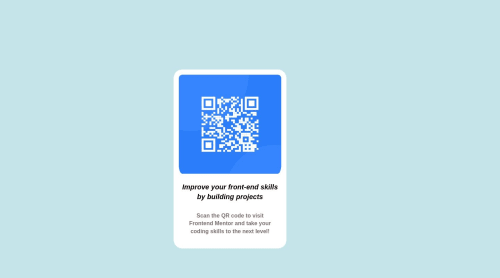Submitted over 2 years agoA solution to the QR code component challenge
Beginner-QR-Code-challenge-using-basic-HTML-and-CSS
@sorin7345

Solution retrospective
Lots of thanks to everyone reviewing or checking my work and a big thumbs up for the community.
Code
Loading...
Please log in to post a comment
Log in with GitHubCommunity feedback
No feedback yet. Be the first to give feedback on sorin7345's solution.
Join our Discord community
Join thousands of Frontend Mentor community members taking the challenges, sharing resources, helping each other, and chatting about all things front-end!
Join our Discord